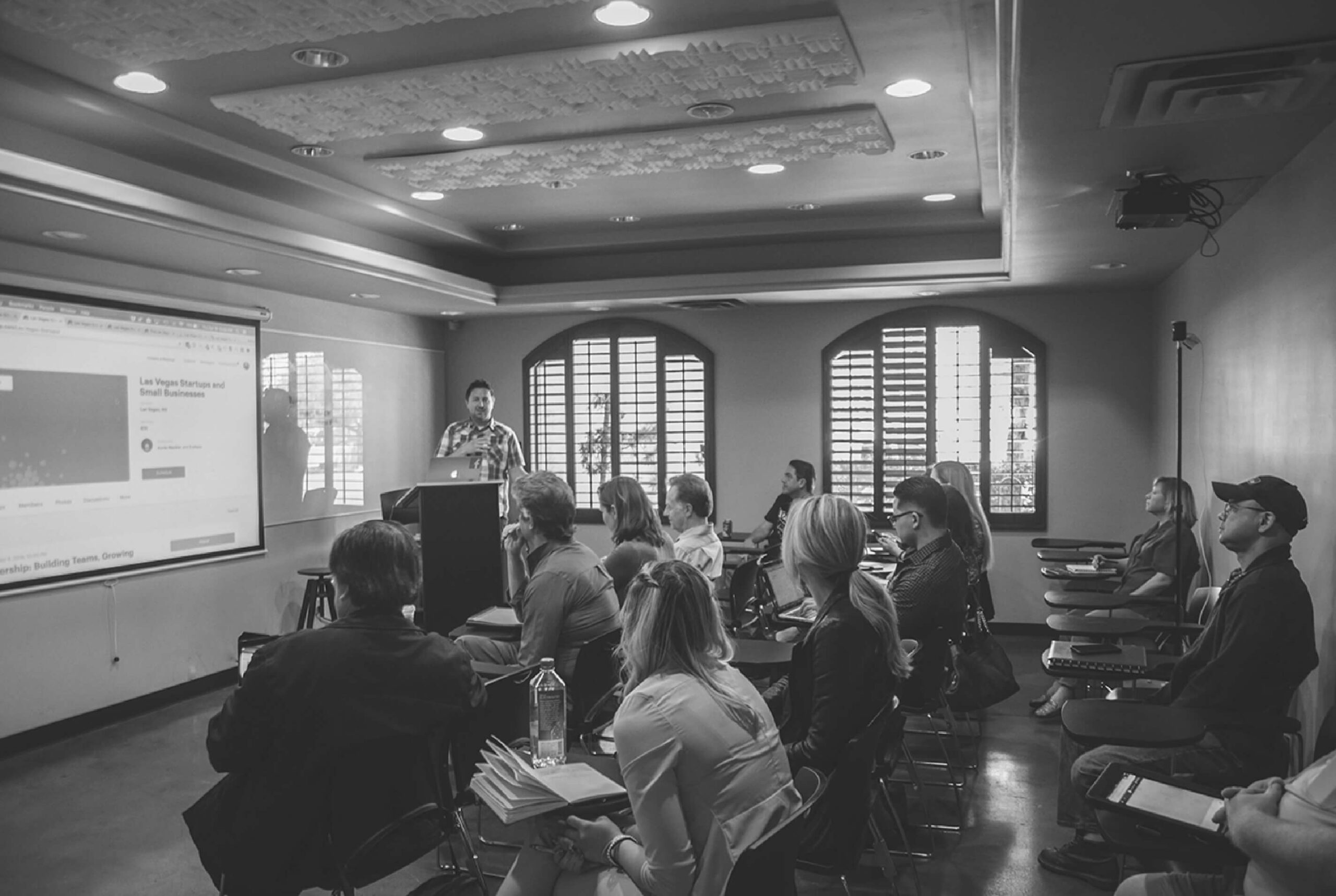Creating an equity-minded culture is hard work and takes a community of champions to bring to fruition. It takes commitment from all corners of a campus to ensure student pathways and organizational structures and institutional policies and teaching and learning practices are designed in ways that support more equitable outcomes. As members of the Illinois Equity in Attainment initiative (ILEA) implement their Equity Plans for their campuses, the role and engagement of student affairs practitioners remains integral. Therefore, the PCC team made the deliberate choice to host a conference with them in mind. The theme of our 2021 ILEA Winter Equity Institute – Building Bridges Across Student Services to Foster Social Belonging – is meant to underscore a commitment to cultivating a campus environment where all who enter the space feel like they matter and that they belong.
As the Partnership for College Completion gears up for next week’s Institute, hear from student development champions at Loyola University Chicago, Olive-Harvey, and Elgin Community College as they provide timely insights on how the convergence of a global pandemic, economic crisis, and the enduring legacy of racism has called them to be innovative and collaborative in reaching students.
| Loyola University Chicago Ashley Williams, M.S.Ed. Associate Director for Special Populations, New Students Programs, Student Academic Services Pronouns: she, her, hers |
Olive-Harvey College, City Colleges of Chicago Michelle Adams Dean of Student Services Pronouns: she, her, hers |
Elgin Community College Rodrigo Lopez Assistant Dean of College in High School Programs Division of College Transitions and Secondary Programs |
Partnership for College Completion (PCC): How have the effects of COVID-19 and the legacy of racism in America affected the way you develop and deliver services to your students?
Ashley Williams, M.S.Ed. (AW): In a way, our team had to start over. I had to unlearn a lot of repeated oppressive rhetoric. I now work through a clearer double consciousness that prioritizes the needs of the oppressed, without fear, I might add. Sometimes I worry if I am not acknowledging all the grief our students are facing. We must recognize all that is happening to our students and consider the factors in our discovery and decision-making stages. I try to imagine all the things a student is carrying with them and consider ways to help them put something down. My team understands that now is not the time to prioritize signature experiences above all else. Being student-centered during COVID-19 means making room for changes as we go along.
Michelle Adams (MA): Olive-Harvey has always understood our population and the importance of delivering services to them. We know that prior to Covid-19 our students always needed that in person connection or JIT approach of “we are here”. Overnight we pivoted to virtual communication, created focus groups, increased department touchpoints and availability. When the civil unrest happened, we gave our students virtual spaces to have conversation about how they were feeling about Covid and the impacts of Racism happening before our eyes.
Rodrigo Lopez (RL): We have been highly-critical and vigilant of our procedures that may limit students’ access to dual credit coursework. As an example, we have worked with our school districts to improve opportunities for students to meet program requirements, which requires that we collectively acknowledge the fact that certain policies have the potential to counter any and all progress to improve minoritized students’ success.
PCC: There is extensive research supporting the impact on students – especially students of color – when they have staff who share similar racial and ethnic backgrounds. What practices or policies would you recommend for institutions to effectively recruit and retain staff of color?
AW: I have many thoughts on the current state of staff of color retention in higher education, but I would sum them up in two themes: ethical conflicts and disingenuous messages. At the highest levels of an institution, individuals must challenge the definition of leadership and diversity. From there, empower individuals responsible for staff wellbeing by giving them the breathing room and resources to make necessary changes.
Institutions should also invest in affinity spaces that promote a greater sense of belonging and do so with some enthusiasm. People want to know the work they are doing matters. It is a simple practice of acknowledgment and gratitude.
MA:
- Encouraging staff to join and participate in organizations that develop them professionally shows support.
- Create a welcoming atmosphere for staff and students to join campus committees and share their diverse opinions and backgrounds.
- As a leader, participate in DEI conversations that may be “uncomfortable” so that you expand your knowledge and understanding and help grow your institution. Challenge colleagues to do the same to create an example for staff.
- Look at your student population, does your staff, faculty and administration mirror that at all levels? Practices such as succession planning and diverse hiring committees, can make staff and students feel welcomed and valued.
RL: Having worked for three separate Hispanic-Serving Institutions, I believe that institutions can be successful in diversifying their workforce by integrating this into their operational plans. Whenever possible, incorporate internal staff of color in the process and leverage their leadership. Stay connected to the community and build purposeful recruitment networks to maximize the opportunities for professionals to engage with the institution.
PCC: How has collaboration taken on new meaning in how your department and/or institution functions during Covid-19?
AW: Simply put, collaboration is how we hold each other upright during COVID-19. Most professionals I work with and know are working at the highest levels of capacity. Collaboration has become a strategy for survival more than a desire to create new partnerships. In many ways, the act itself has become a vessel for challenging systemic dysfunction within organizations. My advice is to use collaboration as a tool to challenge norms and interrogate systems. We identify a unified voice in collaborative spaces and help those least often provided with a platform be seen and heard. It is pretty powerful when you think about it like that.
MA: We work harder at communicating effectively with each other due to increased use of email. Academic Departments have developed protocols with Student Service departments to eliminate student barriers. Staying committed to creating initiatives to impact student success has been helpful. Examples include: curbside food pantry service, afterhours peer mentoring and technology tutoring.
RL: Trust and self-care. Many of our processes and services have had to be reinvented – often more than once. As such, we have had to rely on each other to share the brunt of the work and remind ourselves that we can step away to regroup whenever necessary.
PCC: As you reflect on your own career and experiences with students, what are 3 primary skills that practitioners need in their toolbox to make positive change(s) today?
AW: First, I would say intrusive advising skills. COVID-19 and the remote learning experience forces us to think differently. We have an opportunity to learn from our students by increasing our interactions with them and listening for real concerns.
Second, I offer up emotional intelligence—the strategy contributing to seeing change through. You must know how to listen and observe. Take more time to name the barriers we are facing before jumping into the work. We want individuals to go above and beyond, but we may be missing the chance to create the right kind of space for them to thrive.
And lastly, you have to know yourself, and I mean TRULY know yourself and your worth. In the earlier stages of my career, I found it easier to hide my strengths for the team’s betterment, but I realize that served no one as I look back. In this phase of my career, I am prioritizing self-preservation and purpose.
MA:
- Be willing to think outside of your normal box and invite others to be creative with you.
- Having Compassion for students allows us to identify how we can make a difference
- Don’t stop learning, what you learn today can help you support students tomorrow
RL: Learn from your students and their communities. Become an active participant in promoting student success. Promote, support, and celebrate student advocacy.
Learn more about the ILEA initiative today.


